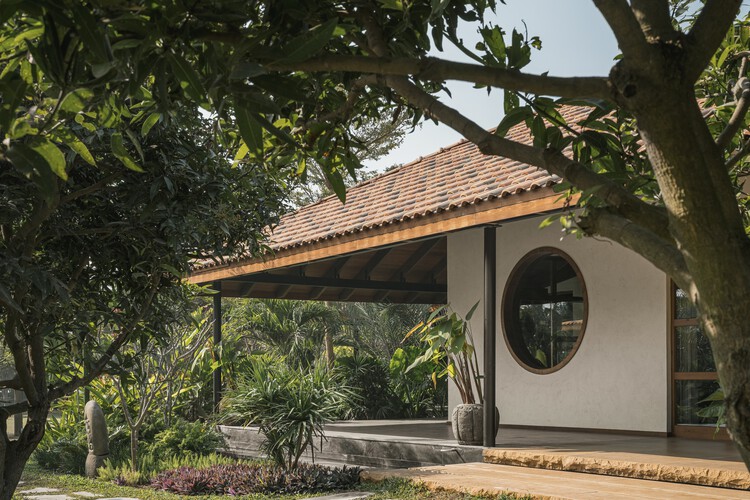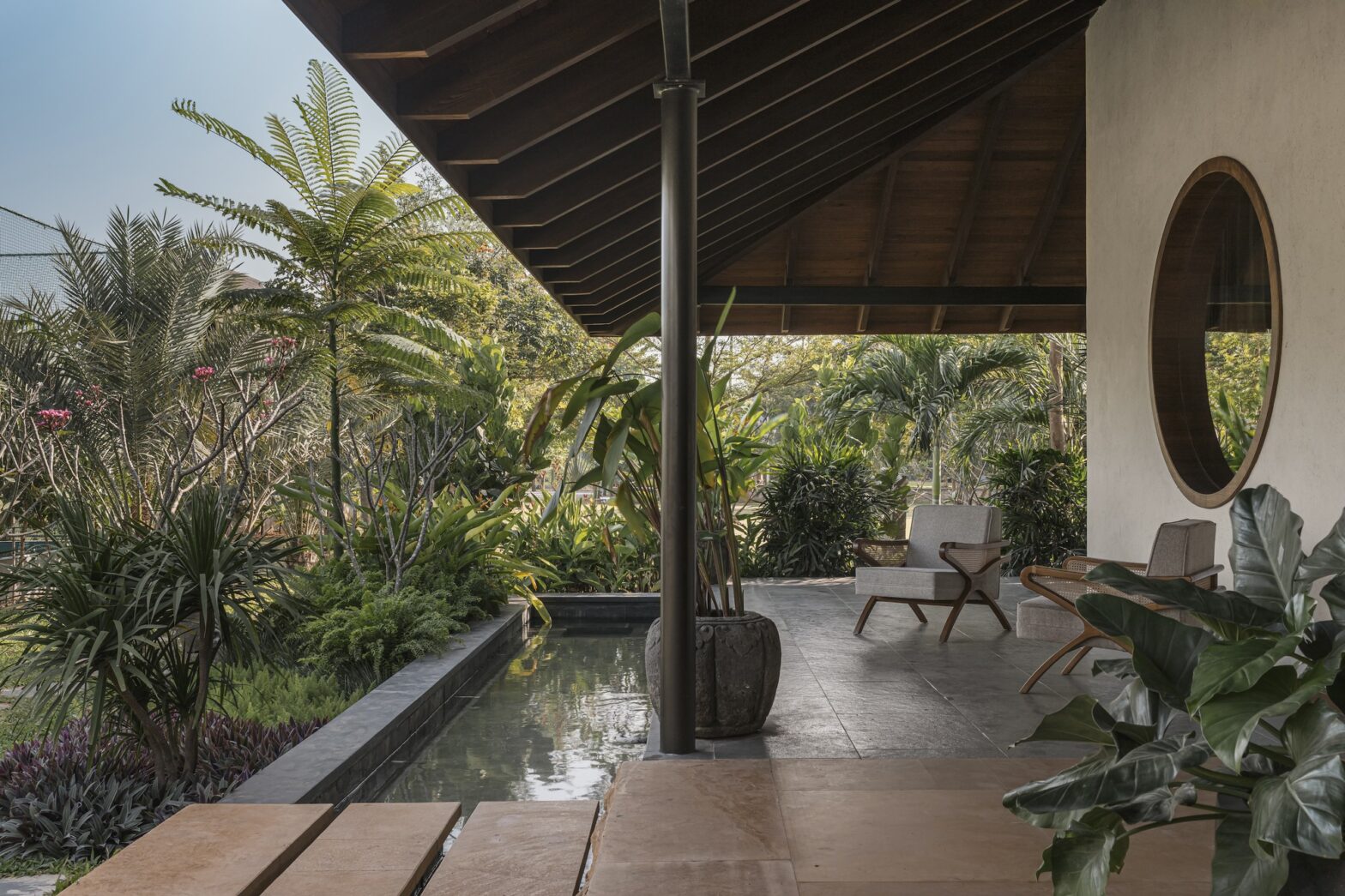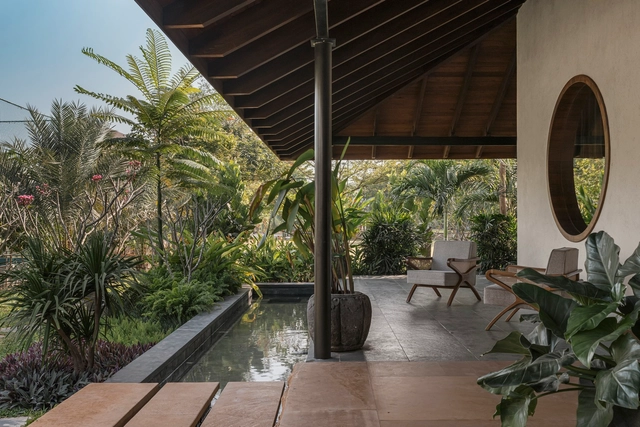
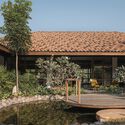
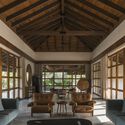
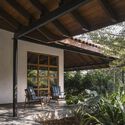
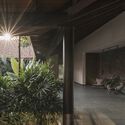

- Area:
14000 m² -
Year:
2023
-
Manufacturer: Hunsur, Let's hope, Ritika forest
-
Lead architects:
Srikanth Reddy, Raghuram, Neelesh
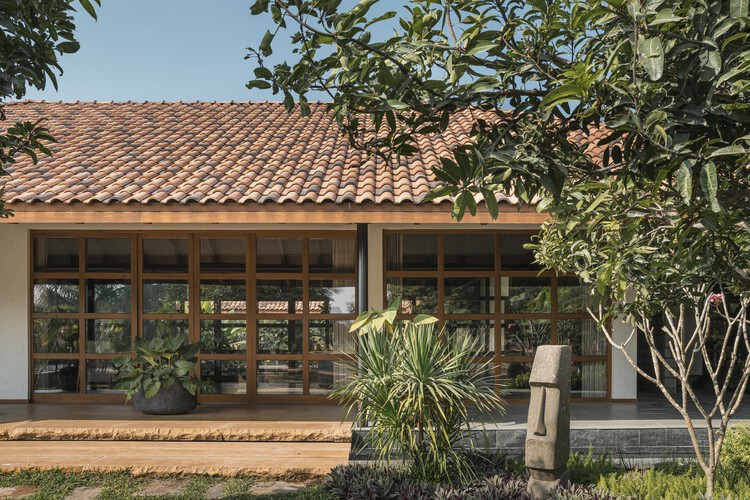
Text description of the architects. Spacious, inviting and intimate courtyards have a permanent place in vernacular architecture across India. Beyond their climatic purposes, courtyards take on the role of a social space, a space of contemplation and a space where things happen. Their presence in various shapes, proportions and sizes is a ubiquitous feature of Indian vernacular architecture. The courtyard house – in Mansanpally village, 40 km from Hyderabad – is a modern take on the local Manduva house. Designed for contemporary living, the courtyard house evokes the simplicity and authenticity of local architecture, creating spaces that are as functional as they are tranquil.
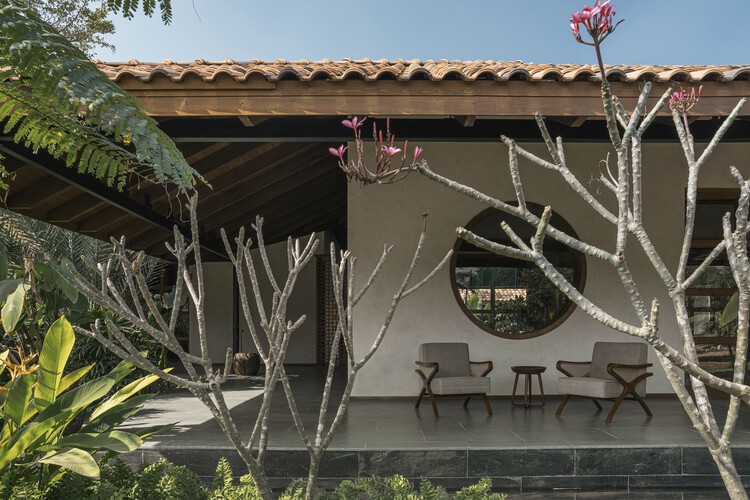
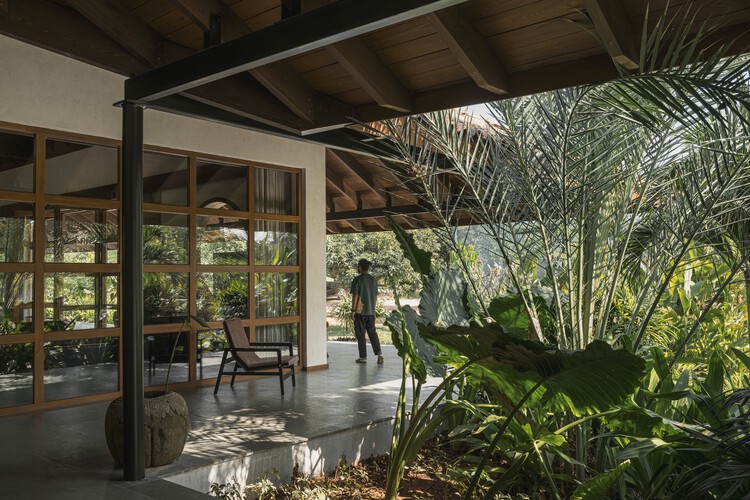
The client's brief called for the expansion of a one-bedroom farmhouse into a place where his extended family could live in the tranquil company of nature. This required the addition of six bedrooms as well as a fully functional kitchen and dining area and extensive areas for communal living. The need for privacy and sociability also required the design to include green spaces for each room as well as seamless connection to communal open spaces. This requirement of the brief was solved by reinterpreting the traditional “Manduva House”.
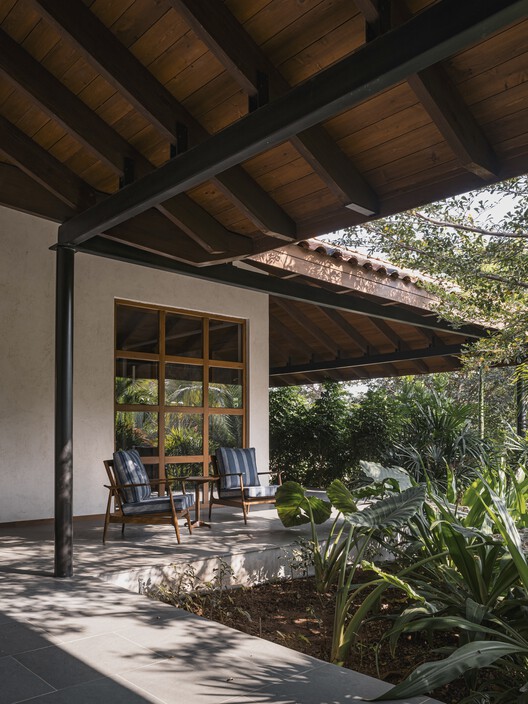
The courtyard, an integral part of the Manduva House, has been reinterpreted to reflect the elements of modern country living. By strategically separating the four blocks around the central courtyard, as opposed to a traditional courtyard arrangement, the design allows for natural ventilation from all directions, improving air circulation and overall comfort. This spatial organization also prioritizes the customer's need for solitude and social interaction while maintaining a connection to nature. To achieve a unified appearance, the roof was divided into four smaller sections housed under a single roof. The structure, made entirely of wood without the use of metal components, underlines the essence of rural architecture – a building that harmonizes with the surroundings, responds to local climatic conditions and relies on the use of natural materials.
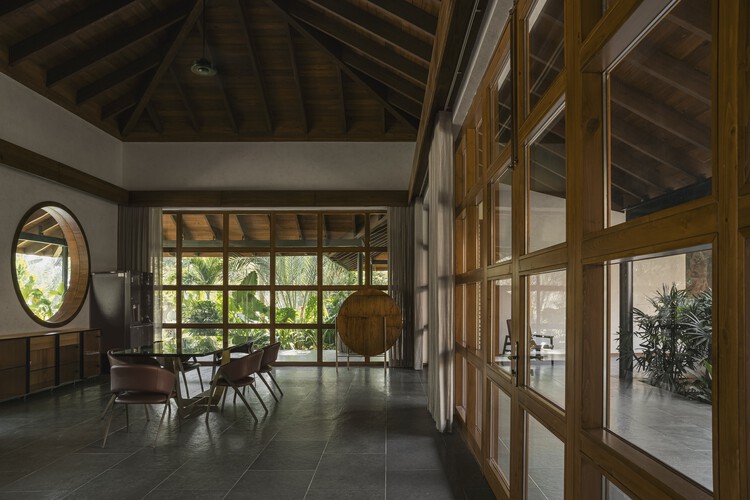
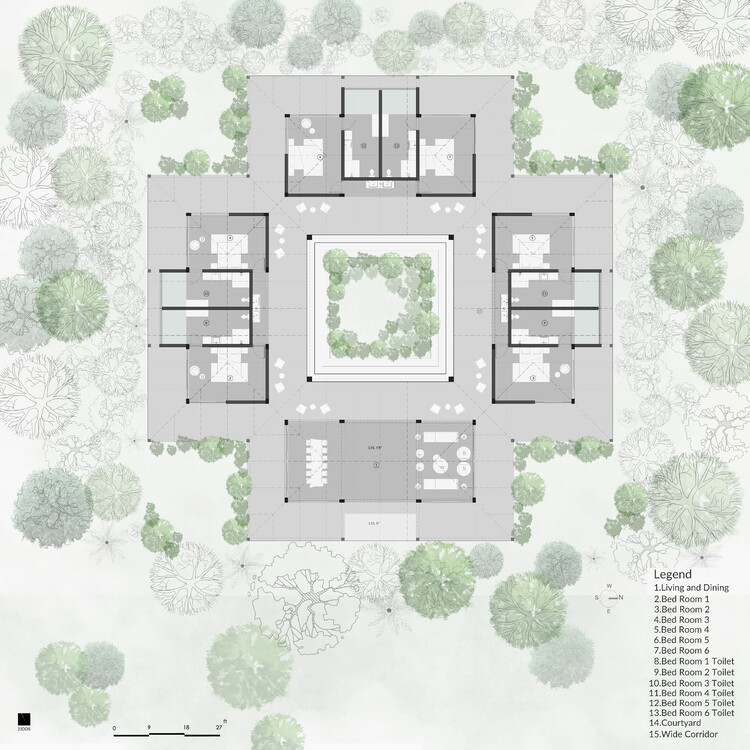
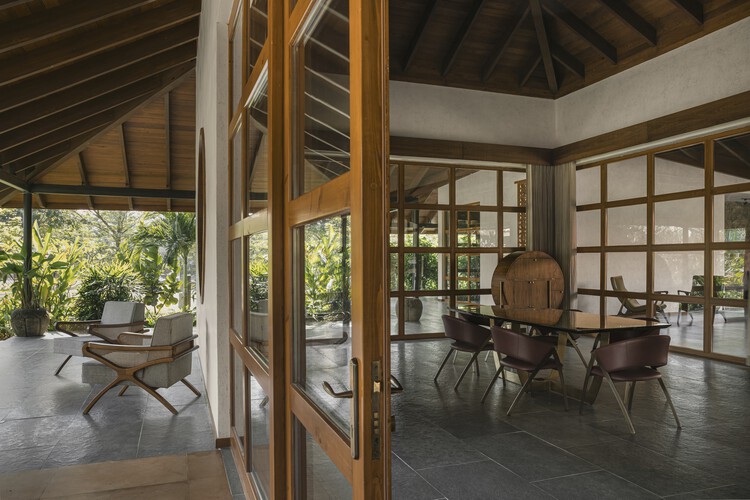
Approaching the farmhouse through a narrow passage in the middle of a mango orchard, one is greeted by a welcoming building with spacious semi-open verandas. The drive continues over an entrance waterway onto an entrance porch that overlooks the living and dining areas. The porches, protected by the extended wooden roof, provide much-needed protection and transition from the outdoors to the indoors.
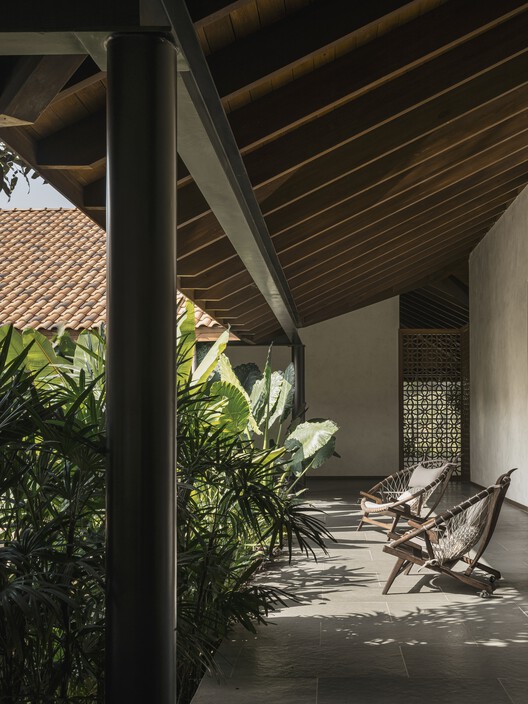
Large glass panels and operable wooden frame doors in the living room invite you to explore the courtyard. The central courtyard is full of greenery and offers space for communal activities. A small water feature with a suspended wooden deck increases the versatility of the space and acts as a climate regulator.
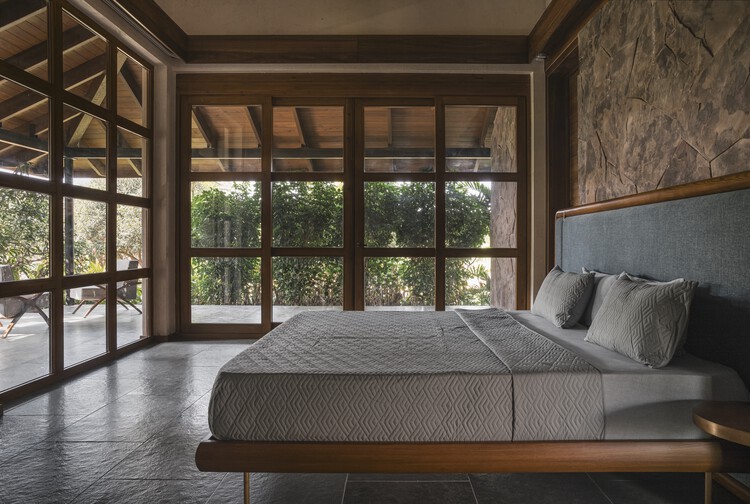
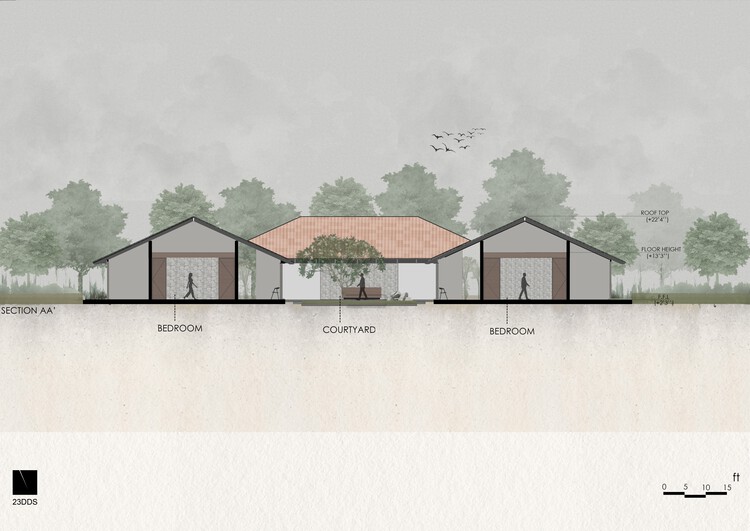
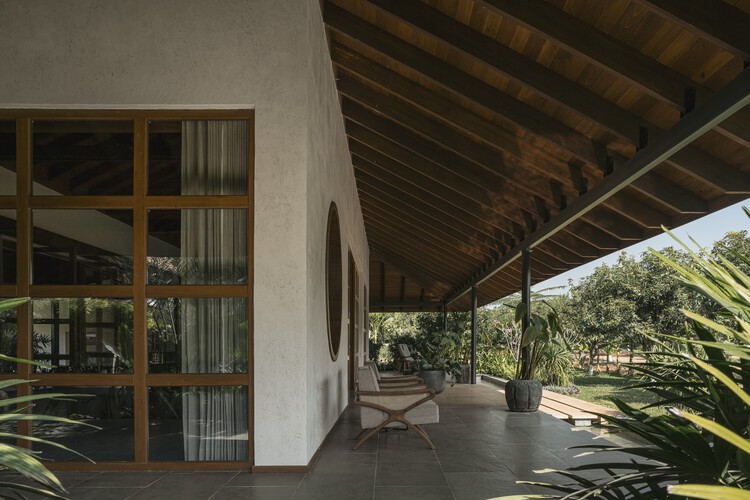
Access to the bedrooms and other private spaces is via the central courtyard. Each bedroom is designed to open onto a rear veranda, ensuring residents' privacy by avoiding a direct line of sight to the courtyard. This floor plan also offers private open seating areas for each bedroom. By recessing and positioning the bedroom doors to the side, the design further maintains the integrity and sanctity of the courtyard.
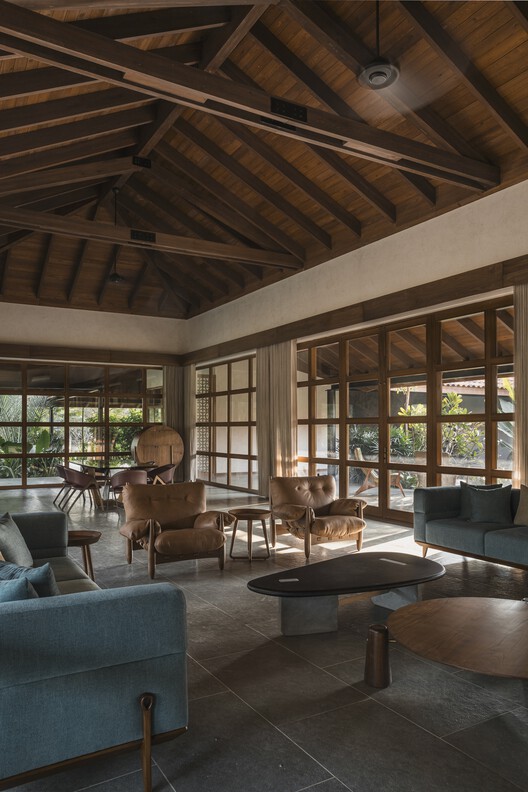
The interior follows the minimalist theme, expressing simplicity and functionality through the use of natural materials and an earthy color palette. A single Kota stone with a leather finish gives the semi-open and closed spaces a unified appearance, while the civil walls painted with a white micro-coating give the country house a sense of austerity appropriate to the country house. Visual interest in the design is created by cladding main walls in brown sandstone at strategic locations. Bright splashes of color and contrast are created through furniture. Natural wood roofs and Spanish terrace tiles provide a connection to the rural context of the site, while large glass openings reinforce this connection by allowing unobstructed views of the nature outside. This no-frills concept allows the true beauty of the materials to be highlighted and celebrated, while ensuring that the architecture becomes part of the natural landscape rather than standing out from it.
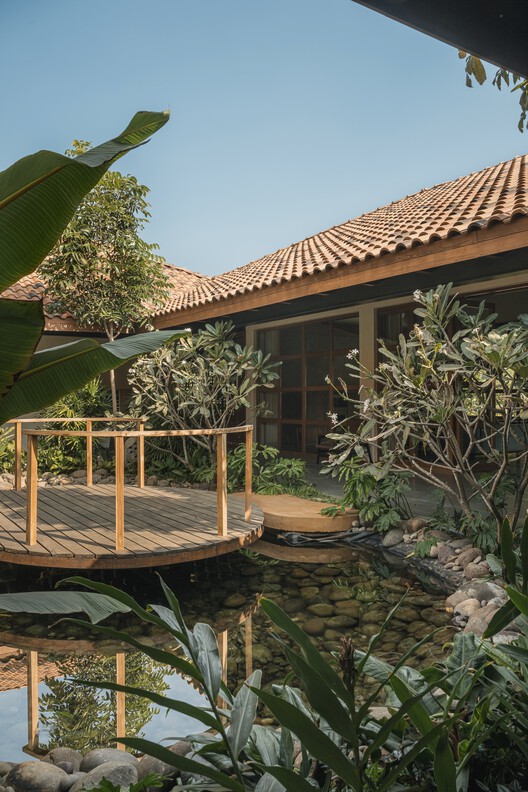
The Hofhaus is a dialogue between tradition and modernity, where the essence of rural architecture is celebrated through contemporary design. Every element of the design, from the central courtyard to the exposed roof, reflects a commitment to creating spaces that honor heritage without compromising today's needs. By cleverly combining natural materials to meet the spatial needs of a modern home, the architecture creates a home that feels both timeless and relevant and, by extension, is a true embodiment of modern rural life, deeply connected to its roots remains.
